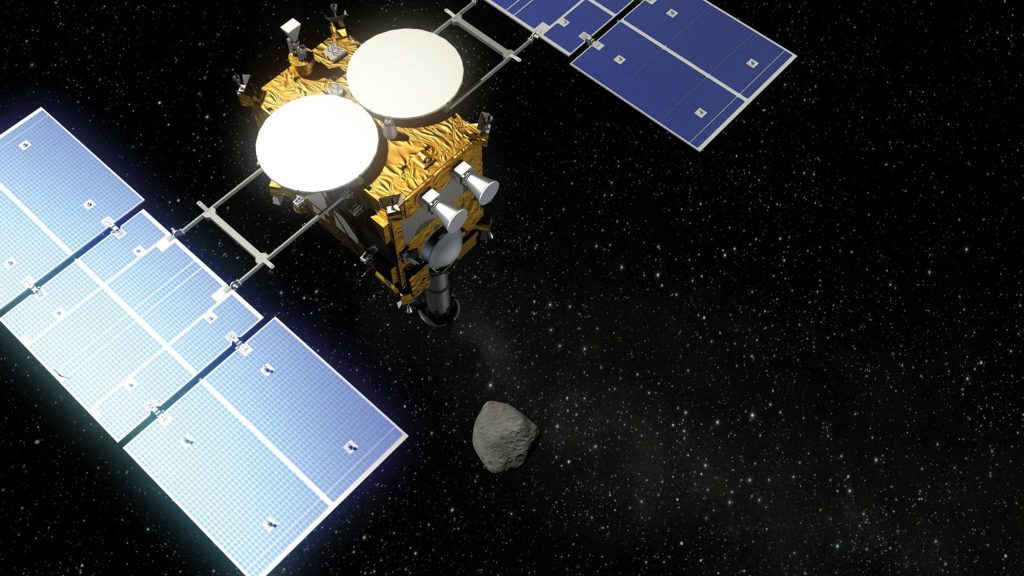Mobile Asteroid Surface Scout
The Japanese Hayabusa2 spacecraft embarked on a unique mission on 3 December 2014. Its destination is the C-type asteroid 162173 Ryugu (1999 JU3), which belongs to the most common variety of near-Earth asteroids. Hayabusa2 will observe, map and measure it. In addition, the MASCOT lander will touch down on the asteroid, ‘hop’ around on the surface and take measurements in several places. Hayabusa2 will return to Earth with the probes taken from the immediate vicinity of the asteroid two years later. The aim of the Hayabusa2 mission is to learn more about the origin and evolution of the Solar System. Like comets, asteroids are some of the most primordial celestial bodies. Ryugu has a diameter of only one kilometre and has a correspondingly low gravitational pull. MASCOT will be pushed out of its holder by a spring mechanism and fall to Ryugu from a height of approximately 60 metres. Once it is there, it will record data for up to 16 hours, sending the information to its mothercraft. It will use its swing arm to ‘hop’ across the surface. This has been programmed in such a way that the lander does not reach escape velocity when moving, which would cause it to fly back into space.
MASCOT was built by DLR together with the French space agency CNES and the Japanese space agency JAXA. The DLR Institute of Space Systems designed, manufactured and tested the lander. The Institute of Composite Structures and Adaptive Systems was responsible for the lander’s stable structure. The DLR Robotics and Mechatronics Centre developed the swing arm, while the DLR Institute of Planetary Research contributed towards the camera and radiometer. CNES was involved in the development of MASCOT’s power subsystem, part of the telecommunications system including the antenna, descent and landing emission analysis and the MicrOmega instrument (optical microscope and NIR hyperspectral camera), which was developed at the Institut d’Astrophysique Spatiale in Orsay. JAXA provided the transceiver for the telecommunications system. The MASCOT asteroid lander is monitored and operated from DLR’s Microgravity User Support Centre in Cologne.
German Aerospace Center (DLR)
Tra-Mi Ho · E-Mail: tra-mi.ho@dlr.de · DLR.de/en
